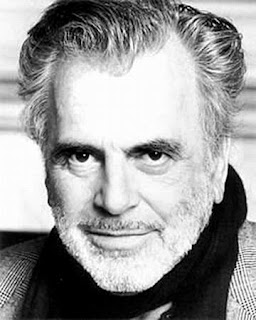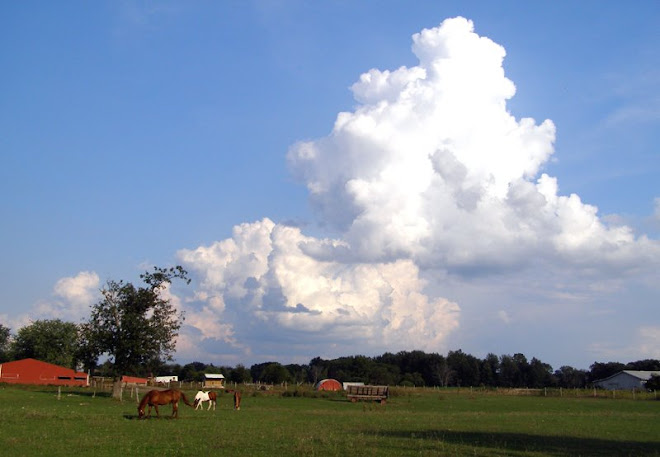-
-
Migratory Cotton Picker, Arizona, by Dorothea Lange, 1949
When I visited the Met (Metropolitan Museum of Art) in
NY earlier this month, I very briefly walked the long hall of the photography section looking for the stairs to the rooftop. I was conserving my limited museum endurance for specific galleries at the Met and the MoMA, and my #1 museum goal this trip was the
Cartier-Bresson photography exhibit several blocks down 5th Avenue at the MoMA after lunch. It's good that I did protect my time and energy for Cartier-Bresson, because studying his photos on wall after wall was a powerful, and emotionally draining experience.
But
en route to the Met rooftop, this photograph by Dorothea Lange caught my eye, so I stopped and spent some time with it. I took photos with the Nikon, and with my cell phone. I nabbed the image above from
artnet. Here is the Nikon photo I took, at a wrong angle (the pic was too high to get it straight on) and with pink glare artifacts:
And here is the cell phone pic, unprocessed:
No matter how many times this migratory cotton picker in Arizona puts his hand up in
NO we just keep taking his picture. By the time you get to my cell phone pic, he looks angry, or like the life has been sucked out of his eyes.
Here is the original image again, where his eyes look suddenly gentle after my cell phone version, even though his strong hand still acts as a barrier. I wonder if maybe he was only about to wipe perspiration from his upper lip. No, I think his fingers would have been relaxed in an arc if that were the case. We don't wipe our face with a flattened, stiff hand.
Below him is what is probably Lange's most famous photograph,
Migrant Mother.

Migrant Mother, Dorothea Lange, February 1936
Photographs such as these, and those of Cartier-Bresson of people, are to be felt, not just seen.
Although Florence Owens Thompson, the woman in the photo that has come to represent the Depression, also has her hand to her face, she is not shielding her identity and shame from Lange's lens and our curiosity. But the children are. According to
Wiki, her daughter Katherine, there on the left, said in a 2008 interview that the family felt shame at the fame of this photo.
Fame and shame.
Nowadays (what an old fashioned word that is, no?
nowadays - not befitting this digital age), with so many cameras in people's hands, photographing people in public is a topic of heated debate. In the days of this photo, Dorothea Lange had been hired by the Farm Security Administration (FSA) to document the desperate need, and to support with what some called propaganda, the effort to rehabilitate rural America. According to
Wiki, Lange misreported the details of Thompson and her family, saying they had sold tires to get money to buy food. But one of the family said her story was wrong, because they didn't have any tires to sell. Maybe Lange got her stories mixed up with another family. But Lange also told the Thompsons the six photographs she took for ten minutes of them at a pea-pickers' camp where they had stopped for the night would not be published.
". . . but Lange sent them to the San Francisco News as well as to the Resettlement Administration in Washington, D.C. The News ran the pictures almost immediately, with an assertion that 2,500 to 3,500 migrant workers were starving in Nipomo. Within days, the pea-picker camp received 20,000 pounds of food from the federal government. However, Thompson and her family had moved on by the time the food arrived and were working near Watsonville."
Florence Owens Thompson was found by a reporter in 1978 (not that she was lost), forty years later, and this is what she had to say:
"I wish she [Lange] hadn't taken my picture. I can't get a penny out of it. She didn't ask my name. She said she wouldn't sell the pictures. She said she'd send me a copy. She never did."
Was the aid sent to the pea-picker camp worth the shame felt by the Thompsons, still, decades later? Wiki goes on to say that Lange never got royalties from the photo, since it was funded by the federal government and was public domain. But it did help her career as one of the greatest documentary photos ever.
A couple of years ago, at my photoblog I posted photos of two young men in orange prison jumpsuits at the county fair. They had to spend the day keeping the fairgrounds clean. A photo of one handsome boy's angry face with the Ferris Wheel behind him on the horizon was especially good, and I was proud of it. I saw myself as not just an ordinary middle aged woman for a minute, but as an important documentarian. The photo, however, got an angry reaction from one of my photoblog friends whom I admire. She asked, "What if he were your son? Would you want his photo there like that?" Other highly regarded photographer friends said, "Leave it, it's important." I searched my soul, and I recognized that I would not want my son's picture there, like that. And I also recognized that the anger in his face may have been from sensing my camera. I confess that I was trying to be as inconspicuous and secretive as I could. A juvenile delinquent can land in jail over a stupid, petty mistake, which can shape his life. Did I want to freeze him in that mistake forever? Oh dear, I don't know if I could ever be a photo journalist.
Here in the U.S. it is legal to take photos of people in public places, as long as you don't publish for commercial purposes without their permission. My own rule is that I won't take a photo of a person who is in public without much choice or power, such as the prisoners, or homeless people. If I had their permission, I would, but I doubt I would ever ask.
I realize this is a huge topic, with many avenues and contingencies, such as children in public, using photos of others without permission (such as that I nabbed above), and on and on. But my main point here is, Is it important to document the suffering of some in order to garner the support and help of others, even if it causes the subject shame?
Photograph of Lange on the jeep is by Rondal Partridge, FSA photographer.
-
-







































































